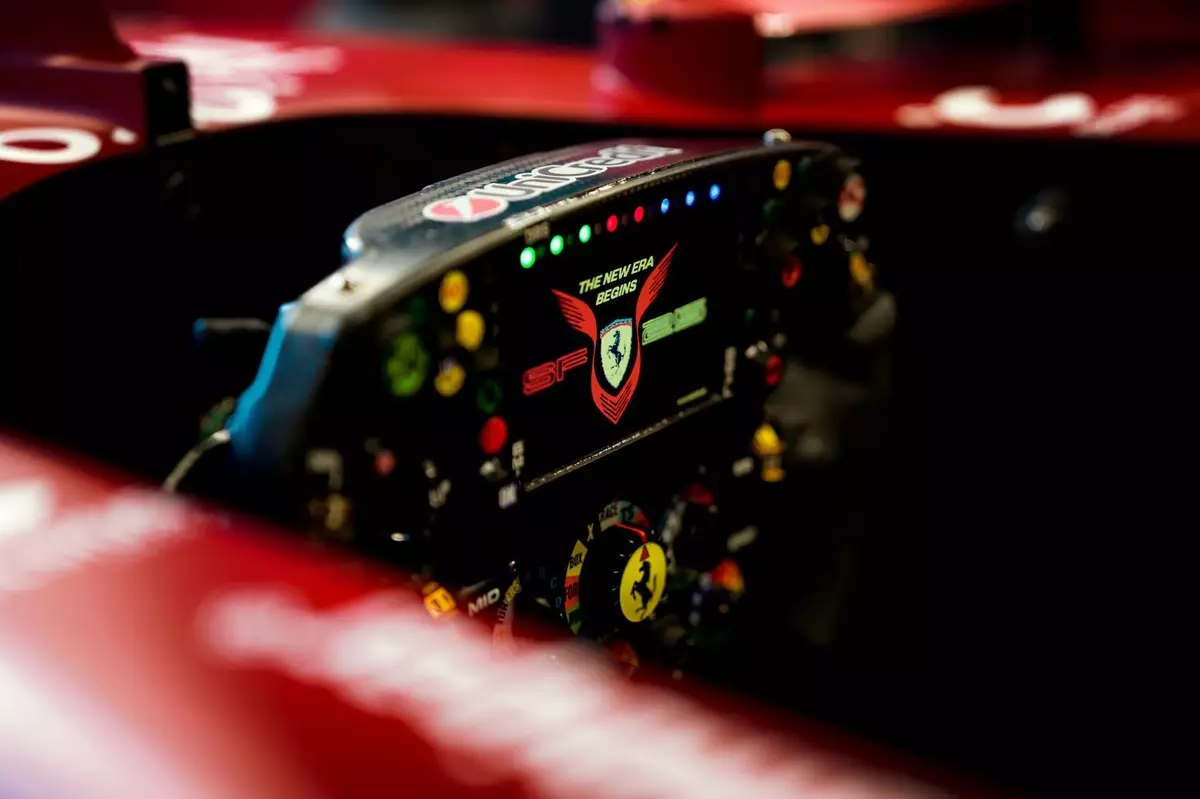As the pinnacle of motorsport continues to evolve, the entry of Lewis Hamilton into the Ferrari team marks a significant chapter in Formula 1 history. The transition from Mercedes to Ferrari presents a unique set of challenges and opportunities for the seven-time world champion. While Hamilton’s early experiences in Australia and China have been, in many ways, a mixed bag, he has shown a readiness to embrace this transformation. Despite the imperfections during these race weekends, his triumph in Shanghai—claiming his first sprint pole and victory—has undoubtedly fueled optimism among fans and the Ferrari team alike.
Hamilton has long been associated with Mercedes, where he developed a driving style deeply ingrained with the car’s engineering and interface over more than a decade. The nuances of his driving discipline are tied to the familiar tools and setups he has had at his disposal, which makes adapting to the Ferrari SF-25 an intricate process. It’s not just about implementing different driving strategies; it’s about reshaping the entire communication framework between driver and machine.
Custom-Tailoring the Ferrari Experience
What is remarkable in Hamilton’s early adjustments is Ferrari’s intentional effort to customize the driving experience to suit him. The team’s eagerness to assimilate aspects of Hamilton’s past preferences, notably from his time at Mercedes, indicates an innovative approach to car development. The simple gestures, such as the personalized welcome message on the steering wheel, illustrate a culture of adaptation that could pave the way for greater harmony between driver and vehicle. This customization goes beyond aesthetics, revealing a profound understanding of Hamilton’s needs.
Ferrari has evidently undertaken a meticulous analysis of Hamilton’s past performances and preferences. The changes extend towards significant components, like his steering wheel, where ergonomic adjustments have been made to optimize the driving experience. Unlike traditional practices, where features are universally standardized across team drivers, Ferrari is willing to break that mold to ensure that Hamilton is fully equipped to leverage his strengths. The intricacies of the car’s interface—down to clutch and gear lever layouts—are reflective of a philosophy that prioritizes driver comfort and efficiency.
Data-Driven Decisions
In the technology-driven world of Formula 1, data is king. One of the paramount differences between Hamilton’s steering wheel settings and those of his teammate, Charles Leclerc, is the amount of data Hamilton has at his disposal. Where Mercedes often simplified access to vital metrics, Ferrari has opted for a more granular view for Hamilton. The steering wheel displays not only standard metrics like speed and gear, but also nuanced indicators like the state of charge (SOC) of the battery and the specific engine mapping (ENG) being utilized. This shift in approach highlights the fundamental differences in how the two teams manage their hybrid power units.
Every seconde counts in Formula 1, and understanding the intricacies of the car’s performance can be the deciding factor in critical moments. By ensuring Hamilton maintains constant awareness of these parameters, Ferrari enables him to make informed decisions on the track. The configuration choices made for Hamilton not only suit his personal taste but also reflect the depth of his experience—offering a blend of familiarity while allowing room for Ferrari’s innovation.
The Importance of Comfort and Familiarity
As athletes, drivers like Hamilton often rely heavily on muscle memory and instinct developed over years of training and competition. The changes within his cockpit aim to minimize the disruption that comes from shifting teams, allowing for a more natural adaptation period. This meticulous focus on replicating the feel of the Mercedes setup is crucial. While this effort may seem insignificant, even the smallest adjustments can fundamentally alter a driver’s ability to perform under pressure.
The strategic introduction of controls that Hamilton is familiar with suggests that Ferrari recognizes the psychological aspect of driving—a factor just as critical as engineering excellence. While some drivers thrive on a streamlined interface, Hamilton’s preference for a more detailed setup underlines his analytical approach. Each additional parameter helps cultivate a psychological state where he can trust his tools implicitly, translating his extensive talent into results on the track.
Innovations Fueling Performance
Ferrari’s bespoke adaptations also point towards a broader trend within the sport. The changing landscape of Formula 1 mandates that teams not only identify driver-specific requirements but also adapt swiftly in an ultra-competitive environment. In doing so, Ferrari is not merely equipping Hamilton with tools conducive to his performance but cultivating an atmosphere that promotes innovation and excellence.
This collaboration could potentially shape the trajectory of Ferrari’s season and Hamilton’s legacy in the Scuderia. As he seeks to replicate his success on the track with a fresh team, the emphasis on personalization elucidates a pivotal shift in the dynamics of Formula 1 driving culture—one that acknowledges the unique blend of human skill and technological sophistication that makes the sport so captivating.


Leave a Reply